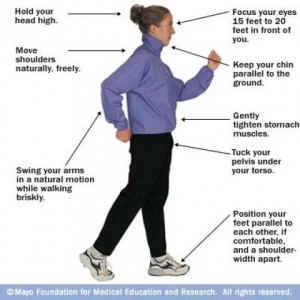 Walking is one of the easiest and effective forms of exercise for all ages. It is very natural and if done regularly it reduces stress and health risks such as heart disease and diabetes. There is also low risk of injury in walking compared to other exercises. More importantly, thirty minutes of daily physical activity like walking can extend life by 1.3 years based on studies.
Walking is one of the easiest and effective forms of exercise for all ages. It is very natural and if done regularly it reduces stress and health risks such as heart disease and diabetes. There is also low risk of injury in walking compared to other exercises. More importantly, thirty minutes of daily physical activity like walking can extend life by 1.3 years based on studies.
According to a study conducted by U.S. researchers, women in their 60’s and above will have an improved brain blood circulation if they do brisk walking for at least three times a week. This means the brain will receive more oxygen and other nutrients which are essential to a healthy brain. With the improved blood flow, the metabolic wastes that can lead to Alzheimer’s disease are also being washed away.
In U.S., the second leading cause of death which can be prevented is inactivity and this is due to advances in technology and automation. Walking makes a person active and also builds body strength. It is good for the heart, develops better breath control and endurance. Other benefits are:
- Stimulates the brain and lowers the risk of dementia in seniors
- Slows down the rate of bone loss
- Reduces the risk of breast and colon cancer
- Helps ease stress and reduces depression
- Improves self-esteem
- Add years to life
Handy tips for walking exercise
- Walk in the morning or late afternoon and avoid the hottest hours.
- Always drink water before and after walking.
- Wear the right shoes and proper clothing.
- Have a goal and be motivated.
Types of walking
- Strolling – A person walks in a natural and relaxed way with arms swinging and shoulders down.
- Brisk walking or paced walking – A person begins to sweat and breathes heavily while walking in faster steps.
- Power walking – A person walks with weights in hands or strapped on waist and ankles.
Recommended Articles:

